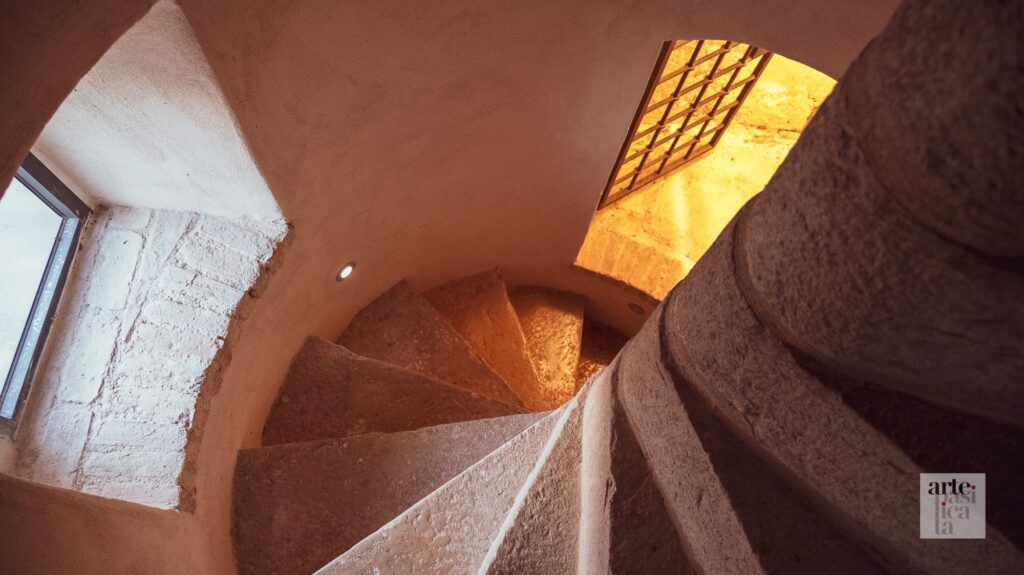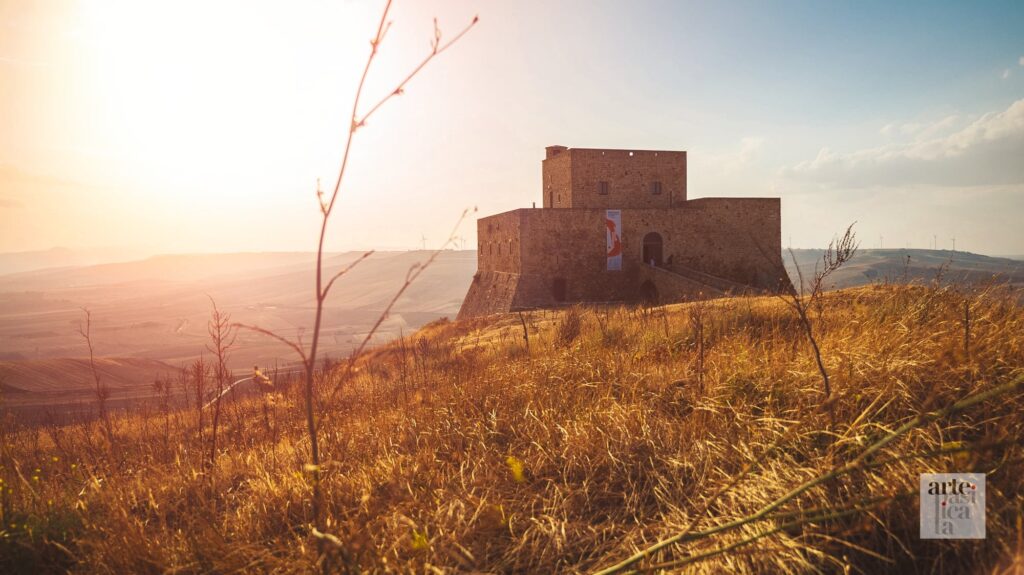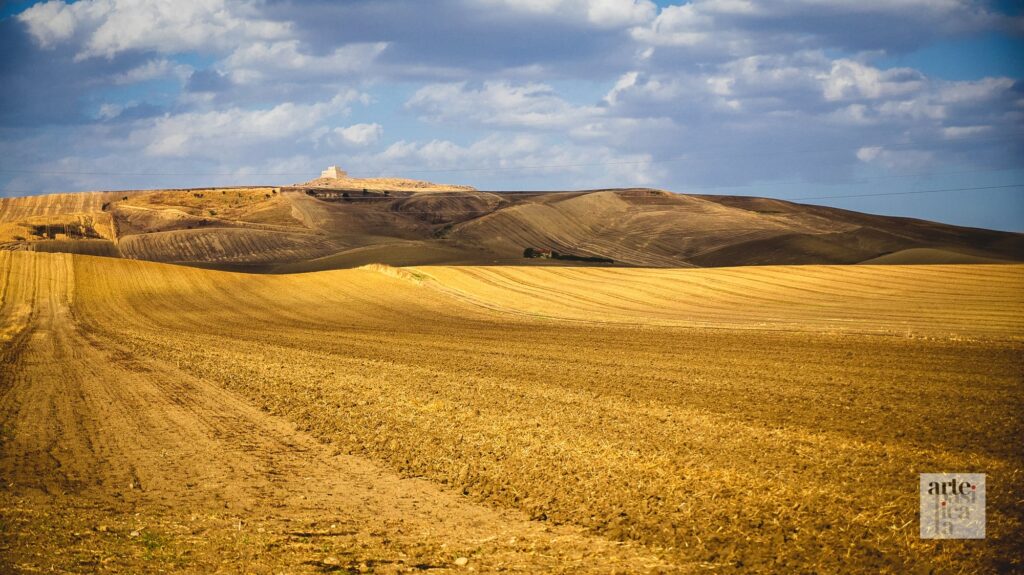the context
The Castle of Monteserico, in its simple and incisive form of a square-based keep surrounded by walls, is documented as early as Norman times. It dominates from a small rise an extraordinarily evocative landscape, gently and mysteriously undulating with fields of wheat and dotted with the traces of the Agrarian Reform that in the 1950s tried, unsuccessfully, to alter the magnetic and solitary vocation of the place with the irruption of modernity and the creation of housing settlements now abandoned. It consists of 36 thousand hectares of wheat-growing land, currently devoid of human presence for miles, on which insist the ruins of rural housing settlements that never really took root: an environment of looming and unexpected vacuity that vibrates toward the desert dimension, a kind of huge canvas of potential on which to still write unprecedented models of relationships based on art and culture.
The activities carried out by Porta Coeli Foundation in these difficult years have often ensured that the castle has been reconverted in an unprecedented way to the conviviality of the human through cultural events that returned the monument to a function and usability after its conservative restoration in 2012. They include, in addition to the second edition of the prize itself (2021), the major exhibitions To the mountain of silk. Donato Linzalata and the Painters of Myth (September 2022) and Be-longing, Italy-Egypt Symposium (October 2022, then exported to Cairo in the following month), all events conceived as pivot points of a cultural discourse focused on territories.
The third edition of the prize (Map3) aims once again to be an operation that, thanks to the participation of artists and users, brings back to the center of attention and relations a place of unusual energy that has inexplicably ended up on the margins of civil and cultural life.
Basilicata is the vocational context for the prize: a land that from the archaeologists of the eighteenth century, to the travelers of the nineteenth century and throughout the twentieth century through the investigations of the greatest photographers, architects and anthropologists of modernity, has always been identified as a pocket of an otherness that, for the cultural elaboration at the present time, becomes even more useful and rare material, of radical importance for the construction of an artistic experience that grasps with responsibility and historical awareness an opportunity for reflection also on behalf of that part of society that, caged in the systems of production and consumption in the global context, often experiences an impoverishment of the quality of its intellectual and spiritual life.





